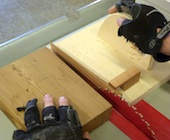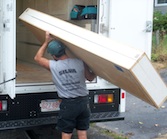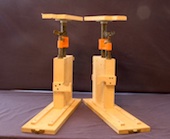Have you ever wondered how a furniture builder can replicate several pieces that are all exactly the same without the use of any fancy CNC machines? Well fortunately there is a method that won’t break the bank, and can be done in a reasonable amount of time. All it requires is some scrap wood or MDF (your choice), a pencil and straight edge for marking lines, a French curve if you want to get extra fancy, blue tape, CA glue, and a router with two different types of pattern cutting bits—one top bearing and one bottom bearing.








